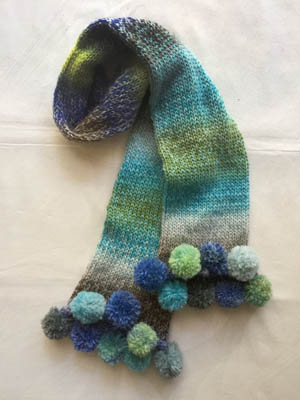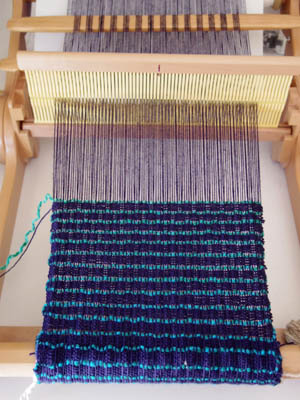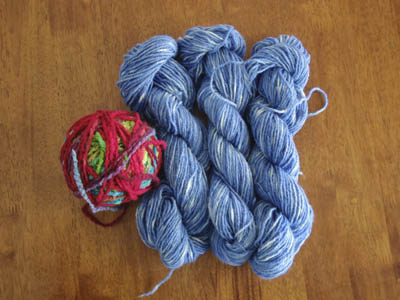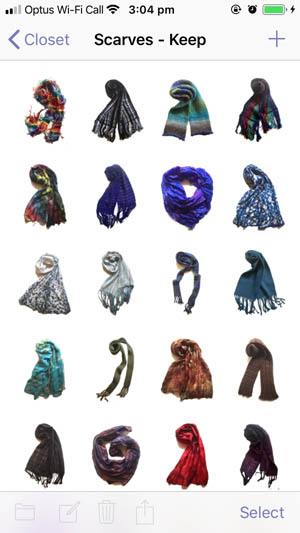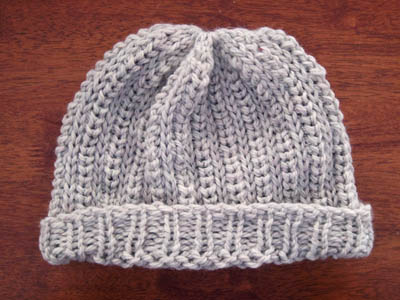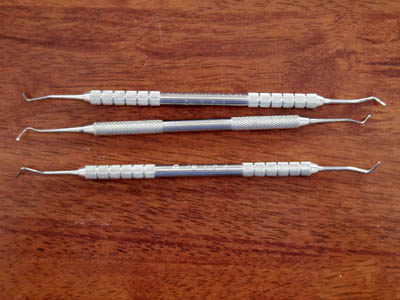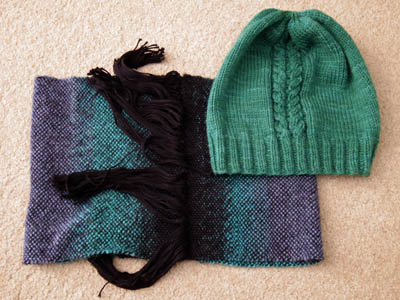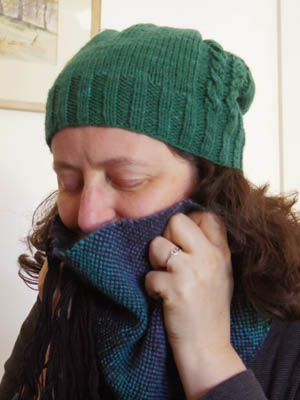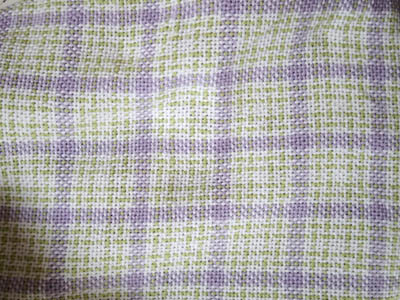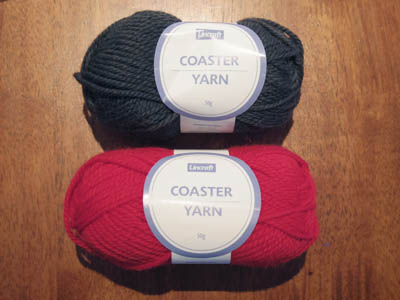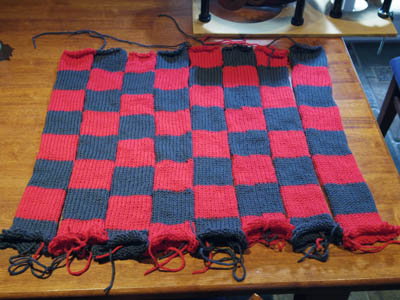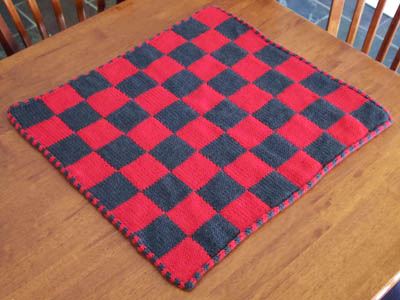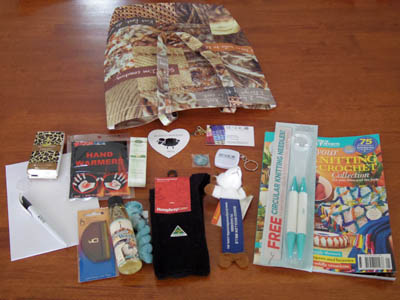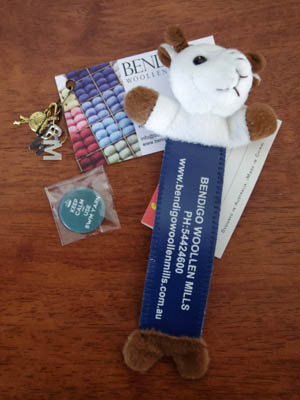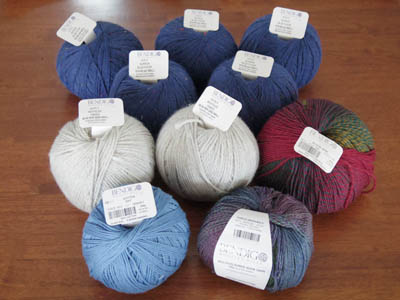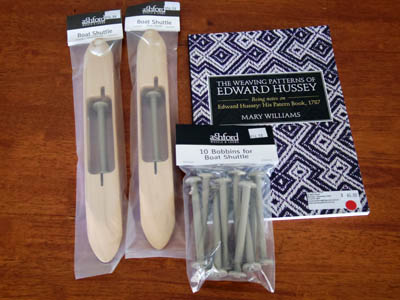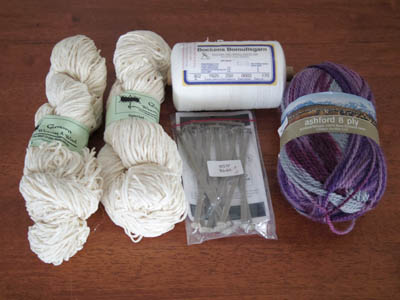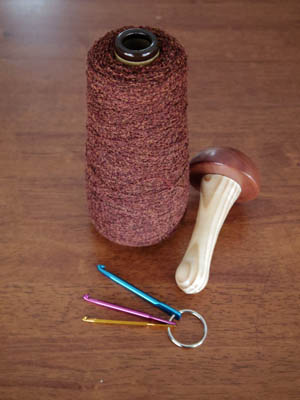Everything creative seems to be stop start lately. Or start stop. Trying things. Failing. Trying something else.
I warped up the AKL with my homemade divided heddle reed to weave a deflected doubleweave sampler only to discover what I was going wasn’t quite doubleweave. So I cut it off the loom and made a cowl, then removed that bit from the class sampler and information sheets. I didn’t have enough time to make any other example items for the class, so I put on a warp to demonstrate one of the methods.
Then I went through everything for the class and extracted anything I didn’t think I needed so I could pack it in such a way that I can carry and roll it all from the car to the hall in one go without wrenching my back.
I’ve been slowly turning knitted tubes into possum pouches, and recruited a friend to sew around 60 pouch linings for them that I cut out of old sheets and pillow cases. Though one pouch took only an hour to finish, I’m getting RSI twinges. Then a post appeared on the Facebook group saying that the number of donations were getting out of hand, and though that post disappeared again I’ve switched to making beanies. Latching up dropped stitches to form a ribbed band then cinching the top of a beanie is much easier on my wrists and hands than knitting a garter stitch top and decrease rows for the base of a pouch.
In other news… A few weeks ago I knocked together a still from an old pressure cooker, copper tubing and an electric stove, and extracted lavender oil. My english lavender hedge had produced a huge amount of flowers, and I had to find another way to process it than spending many hours rubbing dried flowers off heads. I got one small brown essential oil jar’s worth of lavender oil over three distilling batches, and nearly 2 litres of lavender water, so I’m pretty chuffed.
Then today I tried distilling geranium oil since I have heaps of geranium plants that need pruning… and got too little oil to extract anything from the hydrosol (oil infused water). Oh well.
I’m hoping to find some fallen gum tree branches and try extracting eucalyptus oil. I don’t want to cut any branches from my trees, and certainly not from anyone else’s so I must wait. Even if I don’t get much oil, the water that boils the leaves in the pressure cooker should be usable as dye.
I spent a few days last week tackling the sewing pile, shortening a skirt, taking the collar off a dress, fixing a carry bag for outdoor furniture mattresses, refashioning a cardigan. Then I started an idea for a convertible dress/top/skirt. I stopped at dinner time, and the next day all my enthusiasm had dried up. So that’s sitting there in the craft room, looking forlorn and abandoned. But it was good to make a dint in the pile while the urge was there.
In the next few weeks I have a workshop to teach, another to attend as a student, and then the first 4 shaft weaving class of the year. It seems like all the looms are occupied. But not quite… I’d warped the Lotus for five tea towels but wove three. I didn’t feel like making more tea towels and we certainly don’t need them, so I looked at the crazy long straight twill sampler I did a couple of years ago and decided to weave one of my favourite drafts from it, and just make a long piece of white cotton fabric. Who knows what it’ll be. I’m just enjoying the no-pressure weaving.
The Osbourne loom? It’s still empty. I have an idea for something to weave on it, after I ask a particular question at the rug weaving workshop I’m doing next week. If the answer is ‘no’, I’ll move on to my next idea… weaving canvas for paintings.
Start. Stop. Start. Trying things might mean failing, but it might also mean success. It might be a little frustrating, but I’m learning stuff in the process.


